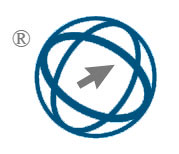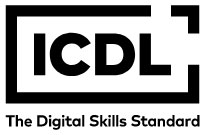ICU-Net: A U-shaped Low-Dose CT Image Denoising Network Based on Codec Structure
Abstract
Aims to address the issue of low-dose CT images (LDCT) introducing a considerable amount of noise due to radiation reduction, which subsequently results in a reduction in image quality and an impact on the validity of medical evaluations, a codec-based denoising model ICU-Net for LDCT images is proposed. The model utilizes an improved ConvNext block (ICB) for feature learning to extract feature data at different scales. Channel and spatial hybrid attention mechanisms (ECA) are introduced to suppress noise and artifacts. Furthermore, a blended loss function is implemented to counteract image over smoothing, which results in a denoised image that is more closely aligned with a normal-dose CT(NDCT) image. Experimental results show that the ICU-Net effectively suppresses the noise and artifacts in LDCT images. In comparison with the current denoising methods, the algorithm performs well and retains more texture details. The algorithm achieved PSNR, SSIM and RMSE values of 25.1285, 0.7217, and 43.0125 respectively, achieving the best results among the models compared.
Full Text:
PDFReferences
Balogh, Z. A., Huszar, T., & Kis, B. J. (2020). Iterative ring artifact removal method for helical computed tomography scans. Journal of computer assisted tomography, Vol. 44, pp. 796-805.
https://www.sci-hub.ee/10.1097/RCT.0000000000001070
Sagheer S V M, George S N.(2020). A review on medical image denoising algorithms. Biomedical signal processing and control, Vol.61.
https://doi.org/10.1016/j.bspc.2020.102036
McLeavy, C. M., Chunara, M. H., Gravell, R. J., Rauf, A., Cushnie, A., Talbot, C. S., & Hawkins, R. M. (2021). The future of CT:deep learning reconstruction. Clinical radiology, Vol. 76, pp. 407-415.
https://doi.org/10.1016/j.crad.2021.01.010
Yu M, Han M, Baek J. (2022)A convolutional neural network based super resolution technique of CT image utilizing both sinogram domain and image domain data. Medical Imaging 2022:Image Processing, Vol. 12032, pp. 564-569.
https://doi.org/10.1117/12.2611972
Trotta, L. D., Matenine, D., Martini, M., Lemaréchal, Y., Francus, P., & Després, P. (2022). On the use of voxel-driven backprojection and iterative reconstruction for small ROI CT imaging. In 7th International Conference on Image Formation in X-Ray Computed Tomography, Vol. 12304, pp. 647-653.
https://doi.org/10.1117/12.2647012
Shivwanshi, R. R., & Nirala, N. (2021, December). Parametric Analysis of CT-image-Preprocessing for Improved Performance of Post-Processing Operation. In 2021 10th International Conference on System Modeling & Advancement in Research Trends (SMART), pp. 235-241.
https://ieeexplore.ieee.org/document/9675309
Salehjahromi, M., Zhang, Y., & Yu, H. (2018). Iterative spectral CT reconstruction based on low rank and average-image-incorporated BM3D. Physics in Medicine & Biology, Vol. 63,pp. 15.
https://iopscience.iop.org/article/10.1088/1361-6560/aad356/meta
Kim, B. G., Kang, S. H., Park, C. R., Jeong, H. W., & Lee, Y. (2020). Noise level and similarity analysis for computed tomographic thoracic image with fast non-local means denoising algorithm. Applied. Sciences, Vol. 10, pp. 7455.
https://doi.org/10.3390/app10217455
Deeba, F., Kun, S., Dharejo, F. A., & Zhou, Y. (2019). Sparse representation based computed tomography images reconstruction by coupled dictionary learning algorithm, IET Image Process, Vol. 14, pp. 2365–2375.
https://doi.org/10.1049/iet-ipr.2019.1312
Chen H, Zhang Y, Kalra M K, et al. Low-dose CT with a residual encoder-decoder convolutional neural network. IEEE transactions on medical imaging, 2017, Vol. 36, pp. 2524-2535.
https://ieeexplore.ieee.org/abstract/document/7947200
Izadi, S., Sutton, D., & Hamarneh, G. (2023). Image denoising in the deep learning era. Artificial Intelligence Review, Vol. 56, pp. 5929-5974.
https://link.springer.com/article/10.1007/s10462-022-10305-2
Gholizadeh-Ansari, M., Alirezaie, J., & Babyn, P. (2020). Deep learning for low-dose CT denoising using perceptual loss and edge detection layer. Journal of digital imaging, Vol. 33, pp. 504-515.
https://link.springer.com/article/10.1007/s10278-019-00274-4
Kim, B., Divel, S. E., Pelc, N. J., & Baek, J. (2021, February). CNN-based CT denoising with an accurate image domain noise insertion technique. In Medical Imaging 2021: Physics of Medical Imaging, Vol. 11595, pp. 1074-1079.
https://doi.org/10.1117/12.2580997
Chen, H., Zhang, Y., Kalra, M. K., Lin, F., Chen, Y., Liao, P., ... & Wang, G. (2017). Low-dose CT with a residual encoder-decoder convolutional neural network. IEEE transactions on medical imaging, Vol. 36, pp. 2524-2535.
https://ieeexplore.ieee.org/abstract/document/7947200
Yungang, Z. H. A. N. G., Jianfeng, Y. A. N. G., & Benshun, Y. I. (2019). Improved Residual Encoder-Decoder Network for Low-Dose CT Image Denoising. Journal of Shanghai Jiaotong University, Vol. 53, pp. 983.
https://link.cnki.net/doi/10.16183/j.cnki.jsjtu.2019.08.014
Liang, T., Jin, Y., Li, Y., & Wang, T. (2020, December). Edcnn: Edge enhancement-based densely connected network with compound loss for low-dose ct denoising. In 2020 15th IEEE International conference on signal processing (ICSP), Vol. 1, pp. 193-198.
https://ieeexplore.ieee.org/abstract/document/9320928
Goodfellow, I., Pouget-Abadie, J., Mirza, M., Xu, B., Warde-Farley, D., Ozair, S., ... & Bengio, Y. (2020). Generative adversarial networks. Communications of the ACM, Vol. 63, pp. 139-144.
https://dl.acm.org/doi/abs/10.1145/3422622
Ma, Y., Wei, B., Feng, P., He, P., Guo, X., & Wang, G. (2020). Low-dose CT image denoising using a generative adversarial network with a hybrid loss function for noise learning. IEEE Access, Vol. 8, pp. 67519-67529.
https://ieeexplore.ieee.org/abstract/document/9058648
Sudha, V., & Ganeshbabu, T. R. (2021). A Convolutional Neural Network Classifier VGG-19 Architecture for Lesion Detection and Grading in Diabetic Retinopathy Based on Deep Learning. Computers, Materials & Continua, Vol. 66.
https://doi.org/10.32604/cmc.2020.012008
Heitz, E., Vanhoey, K., Chambon, T., & Belcour, L. (2021). A sliced wasserstein loss for neural texture synthesis. In Proceedings of the IEEE/CVF Conference on Computer Vision and Pattern Recognition, pp. 9412-9420.
https://doi.org/10.48550/arXiv.2006.07229
Ashish Vaswani, Noam Shazeer, Niki Parmar, Jakob Uszkoreit, Llion Jones, Aidan N. Gomez, Łukasz Kaiser, and Illia Polosukhin. 2017. Attention is all you need. In Proceedings of the 31st International Conference on Neural Information Processing Systems (NIPS'17), Curran Associates Inc, Red Hook, NY, USA, pp. 6000–6010.
https://dl.acm.org/doi/10.5555/3295222.3295349
Wang, D., Fan, F., Wu, Z., Liu, R., Wang, F., & Yu, H. (2023). CTformer: convolution-free Token2Token dilated vision transformer for low-dose CT denoising. Physics in Medicine & Biology, Vol. 68, pp. 065012.
https://iopscience.iop.org/article/10.1088/1361-6560/acc000/meta
Wang, Y., Liu, Q., & Lei, Y. (2024). Ted-net: Dispersal attention for perceiving interaction region in indirectly-contact hoi detection. IEEE Transactions on Circuits and Systems for Video Technology,Vol. 34,Issue. 7.
https://ieeexplore.ieee.org/abstract/document/10415065
Luthra, A., Sulakhe, H., Mittal, T., Iyer, A., & Yadav, S. (2021). Eformer: Edge enhancement based transformer for medical image denoising. arXiv preprint arXiv:2109.08044.
https://doi.org/10.48550/arXiv.2109.08044
Xue, T., & Ma, P. (2023). TC-net: transformer combined with cnn for image denoising. Applied Intelligence, Vol. 53, pp. 6753-6762.
https://link.springer.com/article/10.1007/s10489-022-03785-w
Ilesanmi, A. E., & Ilesanmi, T. O. (2021). Methods for image denoising using convolutional neural network: a review. Complex & Intelligent Systems, Vol. 7, pp. 2179-2198.
https://link.springer.com/article/10.1007/S40747-021-00428-4
Yoo, Y., & Jeong, S. (2022). Vibration analysis process based on spectrogram using gradient class activation map with selection process of CNN model and feature layer. Displays, Vol. 73, pp. 102233.
https://doi.org/10.1016/j.displa.2022.102233
Alzubaidi, L., Zhang, J., Humaidi, A. J., Al-Dujaili, A., Duan, Y., Al-Shamma, O., ... & Farhan, L. (2021). Review of deep learning: concepts, CNN architectures, challenges, applications, future directions. Journal of big Data, Vol. 8, pp. 1-74.
https://link.springer.com/article/10.1186/s40537-021-00444-8
Ehab, W., & Li, Y. (2023). Performance Analysis of UNet and Variants for Medical Image Segmentation. arXiv preprint arXiv:2309.13013.
https://arxiv.org/abs/2309.13013
Liu, Z., Mao, H., Wu, C. Y., Feichtenhofer, C., Darrell, T., & Xie, S. (2022). A convnet for the 2020s. In Proceedings of the IEEE/CVF conference on computer vision and pattern recognition, pp. 11976-11986.
https://doi.org/10.48550/arXiv.2201.03545
Kyro, G. W., Brent, R. I., & Batista, V. S. (2023). Hac-net: A hybrid attention-based convolutional neural network for highly accurate protein–ligand binding affinity prediction. Journal of Chemical Information and Modeling, Vol. 63, pp. 1947-1960.
https://pubs.acs.org/doi/abs/10.1021/acs.jcim.3c00251
Gokcesu, K., & Gokcesu, H. (2021). Generalized huber loss for robust learning and its efficient minimization for a robust statistics. arXiv preprint arXiv:2108.12627.
https://arxiv.org/abs/2108.12627
Goyal, B., Dogra, A., Agrawal, S., Sohi, B. S., & Sharma, A. (2020). Image denoising review: From classical to state-of-the-art approaches. Information fusion, Vol. 55, pp. 220-244.
https://doi.org/10.1016/j.inffus.2019.09.003
Sagheer, S. V. M., & George, S. N. (2020). A review on medical image denoising algorithms. Biomedical signal processing and control, Vol. 61, pp. 102036.
https://doi.org/10.1016/j.bspc.2020.102036
El-Shafai, W., El-Nabi, S. A., Ali, A. M., El-Rabaie, E. S. M., & Abd El-Samie, F. E. (2024). Traditional and deep-learning-based denoising methods for medical images. Multimedia Tools and Applications, Vol. 83, pp. 52061-52088.
https://link.springer.com/article/10.1007/s11042-023-14328-x
Silva, J. F., Faraggi, V., Ramirez, C., Egana, A., & Pavez, E. (2024). Understanding Encoder-Decoder Structures in Machine Learning Using Information Measures. arXiv preprint arXiv:2405.20452.
https://doi.org/10.48550/arXiv.2405.20452
Debnath, A., & Mondal, U. K. (2024). Lossless audio codec based on cnn, weighted tree and arithmetic encoding (laccwa). Multimedia Tools and Applications, Vol. 83, pp. 48737-48759.
https://link.springer.com/article/10.1007/s11042-023-17393-4
Asadi, A., & Safabakhsh, R. (2020). The encoder-decoder framework and its applications. Deep learning: Concepts and architectures, Vol. 866, pp. 133-167.
https://link.springer.com/chapter/10.1007/978-3-030-31756-0_5
Geirhos, R., Jacobsen, J. H., Michaelis, C., Zemel, R., Brendel, W., Bethge, M., & Wichmann, F. A. (2020). Shortcut learning in deep neural networks. Nature Machine Intelligence, Vol. 2, pp. 665-673.
https://www.nature.com/articles/s42256-020-00257-z
Greffier, J., Villani, N., Defez, D., Dabli, D., & Si-Mohamed, S. (2023). Spectral CT imaging: technical principles of dual-energy CT and multi-energy photon-counting CT. Diagnostic and Interventional Imaging, Vol. 104, pp 167-177.
https://doi.org/10.1016/j.diii.2022.11.003
Pecoraro, R., Basile, V., & Bono, V. (2022). Local multi-head channel self-attention for facial expression recognition. Information, Vol. 13, pp. 419.
https://doi.org/10.3390/info13090419
Punn, N. S., & Agarwal, S. (2022). RCA-IUnet: a residual cross-spatial attention-guided inception U-Net model for tumor segmentation in breast ultrasound imaging. Machine Vision and Applications, Vol. 33, pp. 27.
https://link.springer.com/article/10.1007/s00138-022-01280-3
Koonce, B., & Koonce, B. (2021). ResNet 50. Convolutional neural networks with swift for tensorflow: image recognition and dataset categorization, pp. 63-72.
https://link.springer.com/chapter/10.1007/978-1-4842-6168-2_6
Moen, T. R., Chen, B., Holmes III, D. R., Duan, X., Yu, Z., Yu, L., ... & McCollough, C. H. (2021). Low‐dose CT image and projection dataset. Medical physics,Vol. 48, pp. 902-911.
https://doi.org/10.1002/mp.14594
DOI: https://doi.org/10.31449/inf.v49i6.7226

This work is licensed under a Creative Commons Attribution 3.0 License.









